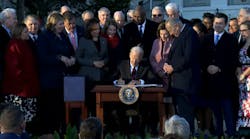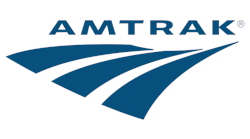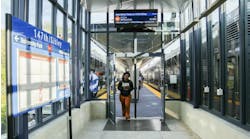FRA wraps series of meetings evaluating the return and expansion of Amtrak Long-Distance Services
The Federal Railroad Administration (FRA) concluded a series of six working group meetings in February to inform and collaborate with stakeholders across the country on FRA’s Amtrak Daily Long-Distance Service Study. Mandated by the Infrastructure Investment and Jobs Act, the study will evaluate the restoration of daily passenger rail service along discontinued long-distance routes and current long-distance routes that operate with less than daily service. It will also open possibilities for establishing new long-distance routes and bolstering essential intercity passenger rail connections, especially in rural areas.
During these working group meetings, local officials, state departments of transportation’s, Amtrak, Class 1 railroads, metropolitan planning organizations, regional passenger rail authorities and other key stakeholders from across the country reviewed the study’s requirements, as well as existing and discontinued long-distance passenger rail services. Meeting participants also discussed the potential economic benefits of new passenger rail connections, options for advancing evaluations of potential routes and how Amtrak and communities can work together to improve use of intercity passenger rail service along long-distance routes.
In the coming months, FRA will hold additional working group meetings to keep stakeholders informed about the study’s progress and work toward a common long-term vision for long-distance passenger rail service.
“The Amtrak Daily Long-Distance Service Study is one part of our broader effort to make passenger rail a more reliable travel option as well as an alternative to congested roads. President Biden’s Bipartisan Infrastructure Law not only prioritizes this study, but it also provides the federal government with unprecedented resources to link communities and economies through passenger rail,” said FRA Administrator Amit Bose. “FRA envisions a future where Americans can easily access the passenger services they need, and conducting this study alongside partners who know the transportation needs of their states and localities bring us one step closer to this vision.”
Once complete, the study will lay forth a vision for long-distance passenger rail service, identifying preferred options for restored, enhanced or new long-distance service, as well as a prioritized inventory of capital projects and other actions needed to advance the routes. The study will also include estimated costs and public benefits for regions along relevant routes and identify federal and non-federal sources of funding.
The study’s results will provide valuable information on the benefits of preferred options, including how those routes could link and serve large and small communities as part of a regional rail network, advance the economic and social well-being of rural areas of the United States, provide enhanced connectivity for the national long-distance passenger rail system and reflect public engagement and local and regional support for restored passenger rail service.
Long-distance rail services benefit both passengers traveling end-to-end on long-distance trains and those traveling to and from the many intermediate stations served along routes. Between March 2020 and March 2022, long-distance routes served more than 4.8 million passengers. In the seven-months that followed, long-distance routes served more than 2.5 million passengers – more than half the ridership of the previous two years combined. The increase comes at a time when Amtrak ridership numbers are rising across the board, and, after a pandemic dip, is further evidence that Americans are returning to travel by rail.




